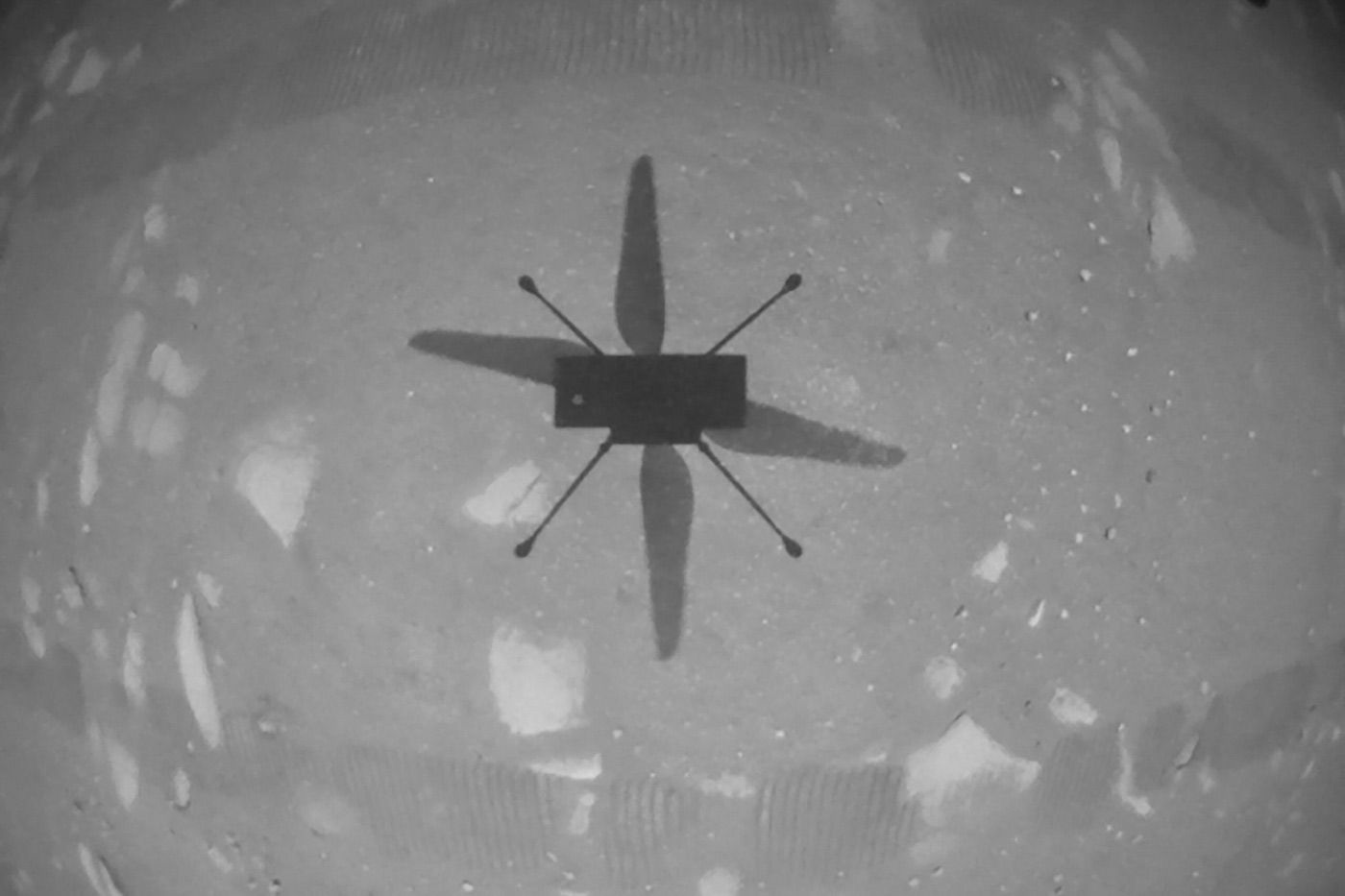
“We have liftoff,” to quote NASA’s famous description of spacecraft taking flight. And indeed, there was a liftoff in the early morning hours of April 19 … not from a launchpad in Florida, but from a patch of dusty terrain on Mars.
The craft in question, the Ingenuity helicopter (it’s really a drone), rose about the height of a basketball hoop into the cold, thin Martian atmosphere. After about 40 seconds of airborne bliss, it alighted on its four short, skinny legs. Ingenuity was the first aircraft to fly in the solar system anywhere but on Earth.
Ingenuity was carried to the Red Planet beneath a protective shield in the belly of the Perseverance rover – an arrangement somewhat like a joey on a kangaroo. The process of detaching Ingenuity and getting it ready to fly was hardly simple and took a few days. It had to be detached, positioned, cranked upright, and left on its own while Perseverance rolled out of the way.
The big challenge in getting a drone to work on Mars is the thin atmosphere, roughly a hundred times less dense than our own. Sure, the craft is pretty light (four pounds), and the martian gravity is only a little more than one-third that of Earth. All that helps, but this diminutive craft still had to move a lot of air to fly.
It did that by having big rotors that spin fast. There are two rotors, by the way, spinning in opposite directions so that the whole craft doesn’t start to wildly twist. The rotors are powered at a level of about a half-horsepower. That’s an impressive energy use for a mechanism that’s shorter than your average Hobbit.
So, what’s the point? Ingenuity didn’t carry any science instrumentation … just two cameras to look at the horizon and the ground. But keep in mind that this brief flight was a technical demonstration, not a research project. Having proven that such craft can successfully fly, the future uses are both obvious and valuable. Martian rovers move very slowly across the dusty, rock-strewn terrain of the Red Planet. A drone could serve as “point person” for future rovers, guiding them around obstacles rather than waiting for them to be found from the ground. Drones could also scout out the most interesting places for reconnaissance by the rovers, which could be efficiently done from 10 feet up.
In other words, Ingenuity is not a toy let loose by NASA in the atmosphere on Mars. It may prove as important to future research as the Wright Brothers’ tentative flights were to future travel.





